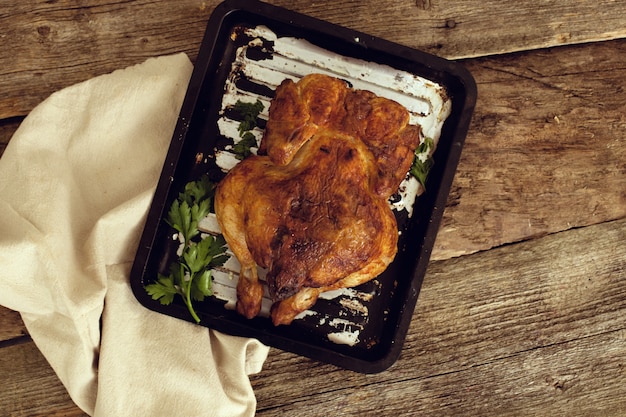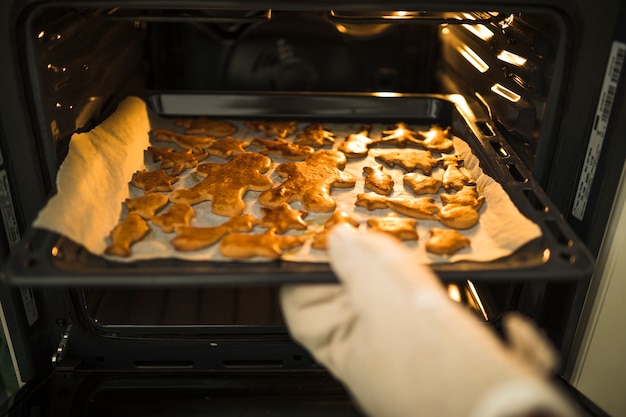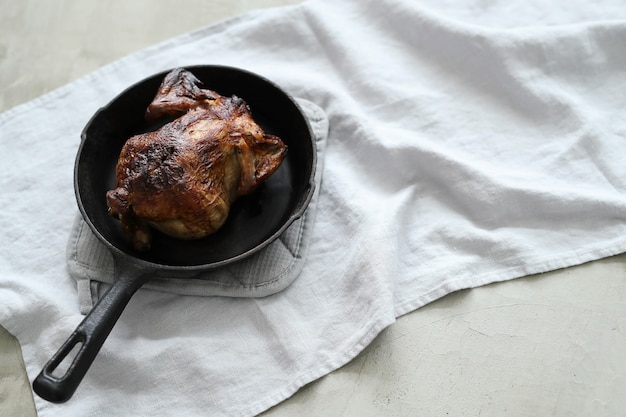The aroma of a perfectly roasted pork, with its crispy skin and succulent meat, is a culinary symphony that fills the home with warmth and anticipation. But achieving that perfect balance of crispy exterior and juicy interior can sometimes feel like a culinary gamble. Over the years, I've spent countless hours in the kitchen, experimenting with different techniques and temperatures, and learning from my share of triumphs and mishaps. This journey has led me to a deep understanding of the pork roast, and now I'm eager to share my hard-earned knowledge with you.
Part 1: Setting the Stage - choosing the right cut and Understanding Oven Temperatures

Before we dive into the details, let's lay the groundwork for a successful pork roast. It all starts with understanding the basic elements: the cut of meat, the oven temperature, and the timing.
Choosing the Right Cut of Pork: A culinary adventure
The world of pork offers a rich tapestry of cuts, each with its own unique qualities and ideal cooking methods. For the perfect roast, we need to make the right choice. Here are a few popular options:
- pork shoulder: This is the king of pork roasts, a powerhouse of flavor and forgiveness. Its generous marbling of fat ensures a melt-in-your-mouth tenderness, especially when slow-roasted. It's perfect for those hearty Sunday dinners or family gatherings where everyone craves a comforting meal.
- pork loin: For those seeking a leaner option, the loin is a perfect choice. Its lean muscle structure cooks quickly and evenly, making it ideal for roasting or grilling. This cut is perfect for a weeknight dinner when you need something flavorful and satisfying without spending hours in the kitchen.
- pork tenderloin: This delicate cut is ideal for smaller gatherings or those who crave a more refined experience. Its compact size and leanness make it perfect for quick roasting or grilling, and it also lends itself beautifully to pan-searing. For a special occasion dinner or a romantic evening, a perfectly cooked tenderloin will impress your guests.
Understanding Oven Temperatures: The Key to a Perfect Roast
Just as the right cut of meat is crucial, so is the temperature of your oven. 325 degrees Fahrenheit (160 degrees Celsius) is the magic number for most pork roasts. It allows for even heat distribution, ensuring that the meat cooks through without drying out. This consistent temperature helps create that beautiful balance between a crispy exterior and a tender, juicy interior.
Part 2: Preparing for Success - Seasoning Your Pork Roast

Now that you've chosen your cut and are ready to unleash your culinary creativity, it's time to prepare your pork roast for a truly unforgettable experience. Seasoning is where the magic happens, where you infuse your roast with flavors that will tantalize your taste buds.
Simple Salt and Pepper: The Foundation of Flavor
While many complex flavor profiles exist, a simple dusting of salt and pepper forms the bedrock of any delicious roast. Salt enhances the natural flavors of the meat, while pepper adds a touch of warmth and complexity.
Creating a Herb and Spice Rub: A Flavorful Symphony
To elevate your pork roast, consider creating a flavorful herb and spice rub. The possibilities are endless, but here's a classic combination I adore:
- Gather your ingredients: 1 tablespoon dried rosemary, 1 tablespoon dried thyme, 1 tablespoon paprika, 1 teaspoon garlic powder, 1 teaspoon salt, and 1 teaspoon black pepper.
- Combine the ingredients: In a small bowl, whisk the herbs and spices together, creating a fragrant mixture.
- Rub it on: Generously rub the mixture all over the pork roast, ensuring you get into every crevice. This creates a flavorful crust that will enhance the roasting process.
- Roast: Place the seasoned roast in a roasting pan and cook in a preheated oven at 325 degrees Fahrenheit for about 20-30 minutes per pound, checking for doneness with a meat thermometer.
Citrus Zest and Chili Flakes: A Zesty, Spicy Twist
For those who crave a touch of zest and spice, try this citrus and chili rub:
- Mix your spices: Combine 1 tablespoon orange zest, 1 tablespoon lemon zest, 1 teaspoon chili flakes, 1 teaspoon garlic powder, and 1 teaspoon salt in a small bowl.
- Apply the rub: Generously rub the mixture all over the pork roast, ensuring you get into every crevice.
- Roast to perfection: Place the seasoned roast in a roasting pan and cook in a preheated oven at 325 degrees Fahrenheit for about 20-30 minutes per pound, checking for doneness with a meat thermometer.
Part 3: The Art of Roasting: Cooking at 325 Degrees Fahrenheit

Now comes the heart of the process: the actual roasting. This is where patience, observation, and a touch of culinary intuition come into play.
Preheating the Oven: A Foundation of Consistent Heat
Always preheat your oven to 325 degrees Fahrenheit. This crucial step ensures even heat distribution, preventing hot spots and ensuring that your roast cooks consistently, resulting in a perfectly tender and flavorful result.
roasting time and Temperature: The Basics of Success
The general rule of thumb for pork roast is to cook it at 325 degrees Fahrenheit for 20-30 minutes per pound. This applies to boneless roasts; if your roast has bone, add an extra 30 minutes to the cooking time. However, the most reliable way to determine doneness is to use a meat thermometer.
Checking for Doneness: Using a Meat Thermometer
A meat thermometer is your essential tool, eliminating guesswork and ensuring you get a perfectly cooked pork roast. Insert the thermometer into the thickest part of the roast, ensuring it doesn't touch any bone. For pork, the internal temperature should reach 145 degrees Fahrenheit (63 degrees Celsius) for safe consumption.
Resting the Roast: A Crucial Step for Tenderness
Once the roast reaches the desired internal temperature, resist the temptation to immediately carve it. Let it rest for 15-20 minutes before slicing. This allows the juices to redistribute throughout the meat, resulting in a more tender and juicy roast.
Part 4: Elevating the Roast: Advanced Techniques
Let's take your pork roast to the next level with some advanced techniques that will transform your culinary creations.
Browning the Roast: Creating a Crispy Crust
Browning the roast before roasting adds a layer of deliciousness, creating a crispy, flavorful crust. Simply sear the roast on all sides in a hot pan with a little oil. You can also use a cast iron skillet for even browning.
Adding Liquids: Enhancing Flavor and Moisture
Adding liquids to the roasting pan helps to keep the roast moist and tender while creating a delicious pan sauce. Wine, broth, beer, apple cider, or even just water work wonders. The liquid bastes the roast during cooking, adding depth of flavor and ensuring a succulent result.
Roasting with Vegetables: A Complete Meal
A pork roast is the perfect canvas for incorporating seasonal vegetables. Root vegetables like potatoes, carrots, and onions are a classic combination, while asparagus, Brussels sprouts, or other seasonal favorites add a touch of freshness and visual appeal. Simply place the vegetables around the roast so they cook evenly, creating a complete and satisfying meal.
Part 5: The Final Touches: Carving and Serving
Now comes the moment of truth, where you showcase your culinary masterpiece: carving and serving your perfectly roasted pork.
Carving the Roast: A Guide to Tender Slices
Carving a roast can seem intimidating, but it's quite simple. The key is to slice against the grain of the meat, which helps to make the slices tender and easy to chew.
If you're unsure about grain direction, simply look for the muscle fibers running through the meat. You want to slice perpendicular to those fibers.
Serving Suggestions: A World of Delicious Possibilities
A perfectly roasted pork is a blank canvas for culinary creativity. Here are some serving suggestions to inspire your next meal:
- Classic roast pork Dinner: The quintessential combination, this includes mashed potatoes, gravy, and seasonal vegetables. It's a comforting and satisfying meal that's perfect for any occasion.
- Pork Roast Sandwiches: Carve the roast into thin slices and serve on crusty rolls with a tangy sauce, like a mustard-based dressing or a tangy barbecue sauce. This is a quick and easy meal for a busy weeknight or a casual gathering.
- Pork Roast with Asian Flavors: Serve the roast with a side of stir-fried vegetables and a sauce based on soy sauce, ginger, and garlic. This combination offers a unique and flavorful twist on the traditional roast.
- Pork Roast with a Spicy Kick: Serve the roast with a side of rice and a spicy salsa or chutney. This is a flavorful and exciting option for those who crave a bit of heat.
Part 6: Troubleshooting: Addressing Common Issues
Even the most experienced cooks encounter challenges. Here are some common issues and how to address them.
Pork Roast is Dry: Preventing a Common Issue
Dry pork roast can be a culinary disappointment. Here are some tips to prevent it:
- Don't overcook: Make sure your pork roast reaches an internal temperature of 145 degrees Fahrenheit, but don't go beyond that. Overcooking will lead to dryness.
- Use a meat thermometer: The most reliable way to ensure you don't overcook the roast. This eliminates guesswork and ensures a perfect result.
- Add liquids: Basting the roast with liquids, like wine, broth, or apple cider, helps to keep it moist. The liquids create a delicious pan sauce and add flavor and moisture to the roast.
- Rest the roast: Allow the roast to rest for at least 15-20 minutes before carving. This allows the juices to redistribute, resulting in a juicier roast.
Pork Roast is Tough: Achieving Tenderness
A tough pork roast can be frustrating. Here's what you can do:
- Choose the right cut: Some cuts of pork, like the shoulder, are naturally more tender than others. Consider the properties of each cut and choose one that will meet your desired level of tenderness.
- Cook at a lower temperature: Cooking at 325 degrees Fahrenheit is generally recommended, but if you're dealing with a tougher cut, you can try cooking it at a lower temperature, like 300 degrees Fahrenheit, for a longer period. This allows the meat to cook more slowly and become more tender.
- Use a slow cooker: For the most tender pork roast, try cooking it in a slow cooker on low heat for 6-8 hours. The slow cooking process allows the meat to break down and become incredibly tender.
Pork Roast is Not Browning: Achieving a Crispy Crust
If your pork roast isn't browning properly, you might need to adjust your technique:
- Preheat your pan: Make sure the pan is hot before adding the roast. A hot pan ensures that the meat sears properly, creating a flavorful crust.
- Use enough oil: Add a little oil to the pan to help the roast brown. The oil acts as a heat transfer agent, promoting even browning.
- Don't overcrowd the pan: Give the roast plenty of space in the pan so it can brown evenly on all sides. Overcrowding the pan will prevent proper browning.
- Sear the roast before roasting: This is a good way to ensure a crispy crust. Searing the roast in a hot pan creates a flavorful crust that adds depth to the finished product.
Part 7: Pork Roast for Beginners: A simple recipe
Ready to embark on your pork roast journey? Here's a simple recipe for a delicious pork roast, perfect for beginner cooks.
Ingredients:
- 3-4 pounds boneless pork loin
- 1 tablespoon dried rosemary
- 1 tablespoon dried thyme
- 1 teaspoon garlic powder
- 1 teaspoon salt
- 1/2 teaspoon black pepper
- 1/2 cup apple cider
Instructions:
- Preheat the oven: Preheat your oven to 325 degrees Fahrenheit.
- Create the spice rub: In a small bowl, combine the rosemary, thyme, garlic powder, salt, and pepper.
- Season the roast: Rub the spice mixture all over the pork loin, ensuring you get into every crevice.
- Place the roast in the pan: Place the pork loin in a roasting pan.
- Add liquid: Pour the apple cider into the bottom of the roasting pan.
- Roast: Roast for 20-30 minutes per pound, or until the internal temperature reaches 145 degrees Fahrenheit, checking with a meat thermometer.
- Rest the roast: Remove the pork loin from the oven and let it rest for 15-20 minutes before carving.
Part 8: Exploring Variations: Beyond the Basic Roast
Once you've mastered the basic pork roast, it's time to unleash your culinary creativity and explore a world of flavorful variations.
Pork Roast with Asian Flavors: A Fusion of Cultures
To create a pork roast with an Asian flair, try these additions:
- Marinade: Marinate the pork roast in a mixture of soy sauce, ginger, garlic, and honey for several hours. This creates a flavorful base that will permeate the meat during cooking.
- Glaze: Create a glaze with soy sauce, honey, and chili flakes, and baste the roast with it during the last 30 minutes of cooking. This adds a beautiful sheen and a touch of heat to the roast.
- Sides: Serve the roast with stir-fried vegetables and a side of rice. This creates a complete meal that combines Asian flavors with the classic pork roast.
Spicy Pork Roast: A Touch of Heat
For those who enjoy a bit of spice, try adding some heat to your roast:
- Rub: Use a spice rub that includes chili powder, cayenne pepper, or chipotle powder. This will add a kick to your roast without overpowering the other flavors.
- Marinade: Marinate the roast in a mixture of hot sauce, chili powder, and cumin. This creates a flavorful marinade that adds depth and spice to the roast.
- Glaze: Make a glaze with honey, chili flakes, and vinegar. This adds a beautiful sheen and a touch of heat to the roast.
- Sides: Serve the roast with cornbread, black beans, and salsa. This creates a complete meal that combines the spicy pork roast with a vibrant array of sides.
Pork Roast with Apples and Onions: Sweet and Savory Harmony
For a sweet and savory combination, try roasting the pork with apples and onions:
- Roast: Place slices of apples and onions around the pork roast in the roasting pan. The apples and onions will caramelize and add a beautiful sweetness to the roast.
- Glaze: Baste the roast with a glaze made with apple cider and brown sugar. This creates a beautiful, glossy glaze that adds depth of flavor to the roast.
- Sides: Serve the roast with mashed potatoes and gravy. This creates a classic meal that combines the sweet and savory flavors of the roast with the comforting sides.
Part 9: Frequently Asked Questions: Answers to Your Culinary Queries
Let's address some common questions about pork roast.
1. How long should I cook a pork roast at 325 degrees Fahrenheit?
The general rule of thumb is to cook a pork roast at 325 degrees Fahrenheit for 20-30 minutes per pound. This time can vary depending on the size and thickness of the roast. It's always best to use a meat thermometer to ensure the roast reaches an internal temperature of 145 degrees Fahrenheit for safe consumption.
2. What happens if I overcook a pork roast?
overcooked pork roast will be dry and tough. It's important to cook pork roast to an internal temperature of 145 degrees Fahrenheit, but not beyond that. If you do overcook it, try slicing it thin and using it for sandwiches or other dishes that can disguise the dryness.
3. Can I roast a pork roast in a slow cooker?
Yes, you can roast a pork roast in a slow cooker. It's a great way to ensure a tender and juicy roast. Simply place the roast in the slow cooker, add some liquids like broth or apple cider, and cook on low heat for 6-8 hours, or on high heat for 4-6 hours.
4. What's the best way to tell if a pork roast is done?
The most reliable way to tell if a pork roast is done is to use a meat thermometer. Insert the thermometer into the thickest part of the roast, making sure it doesn't touch any bone. The internal temperature should reach 145 degrees Fahrenheit for safe consumption.
5. What can I do with leftover pork roast?
Leftover pork roast can be used in a variety of dishes. You can slice it thin and use it for sandwiches, tacos, or salads. You can also chop it up and add it to soups, stews, or pasta dishes.
Now you're equipped with the knowledge and inspiration to create a delicious and satisfying pork roast. So, gather your ingredients, preheat your oven, and get ready to impress!
Everyone is watching

Corn on the Cob: The Ultimate Guide to Perfectly Cooked Ears
Healthy MealsAh, corn on the cob. Just the name evokes images of sunny days, barbecues, and that sweet, juicy flavour that ...

Perfect Pork Roast Oven Cooking Time: A Guide to Delicious Results
Healthy MealsThere's something truly satisfying about a perfectly roasted pork. The aroma alone is enough to make your mout...

Ham Cooking Time: How Long to Bake, Smoke, or Boil a Delicious Ham
Healthy MealsAh, ham. It's a classic, isn't it? A real crowd-pleaser, especially around holidays. And when done right, it'...

Scallops: The Ultimate Guide to Perfect Cooking
Healthy MealsAh, scallops. Those delicate, sweet, and utterly delicious morsels of the sea. They hold a special place in my...

Spaghetti Squash: The Ultimate Guide to Cooking and Serving
Healthy MealsRemember that time you saw spaghetti squash at the supermarket, looking all bumpy and strange, and thought, "W...
